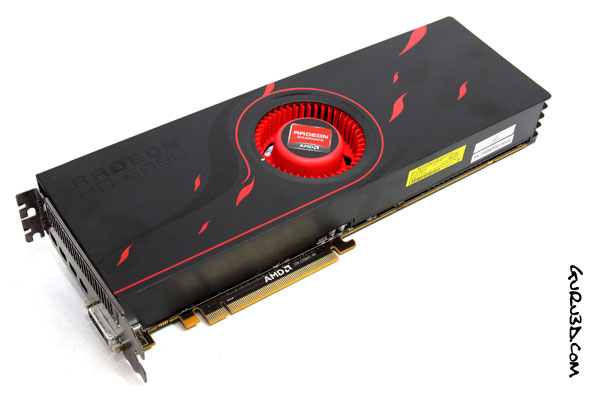Product overview
So let's quickly do a run down on the two products used today.
The GeForce GTX 590
The GeForce GTX 590, in very few words, is one graphics card made out of two graphics processors. Internally they are connected through a PCIe connection (onboard) and then they operate in SLI mode. To accomplish something really sturdy and powerful, NVIDIA took their fastest GPUs available and without any compromises on the number of shader processors etc. inside that GPU they started designing the card.
The end result is a dual-GPU product that runs two ICs called and tagged as the GF110, the very same stuff you find in the GeForce GTX 580, and in its bare essence the GTX590 is in fact two 580s albeit clocked slower. Memory wise NVIDIA has sizable and expensive memory volumes due to their architecture, we pass 1 GB per GPU as standard these days for most of NVIDIA's series 500 graphics cards. Each memory partition utilizes one memory controller on the respective GPU, which will get 256MB of memory tied to it. The GTX 590 has six (x2) memory controllers (12x256MB) = 3072 MB of GDDR5 memory. The TDP is roughly 365 Watts, a very respectable number really. TDP = Thermal Design Power. Roughly translated, when you stress everything on the graphics card 100%, your maximum power consumption is the TDP.
Read our full review here.

The Radeon HD 6990
So then, again a dual-GPU card, it is based on two Cayman GPUs. Take a Radeon 6970 and multiply everything by two. And that is roughly the R6990 in a nutshell, features and specification wise, yet now it's one card.
The AMD Radeon HD 6990 graphics card features dual-BIOS capabilities. This feature is controlled by an Unlocking Switch sitting close to the CrossFireX connector on your board. The switch toggles between the factory-supported Performance BIOS of 375W TDP (BIOS1), and a more extreme Performance BIOS (BIOS2) that unlocks higher clock speeds and up to 450W TDP of performance.
The reference default is BIOS1 which we'll use. The Radeon HD 6990 comes armed with an astonishing 3072 shader processors, thus 48 SIMD based shader clusters, split up in a twofold engine per GPU. The domain and shader clock is locked in at 830 or 880 MHz. The card comes paired with 4 GB of memory clocked at (effective) 5000 MHz (2GB per GPU).
Read our full review here.

